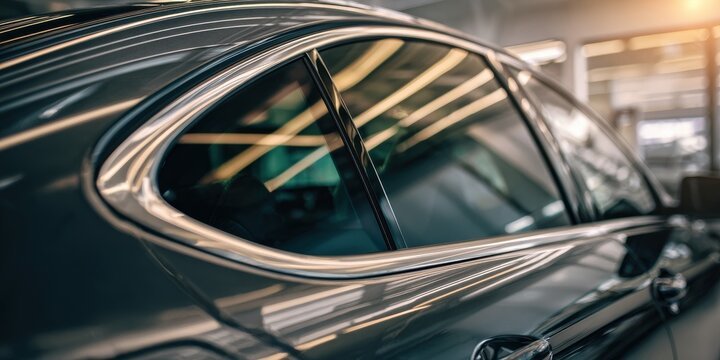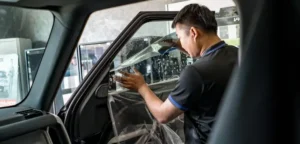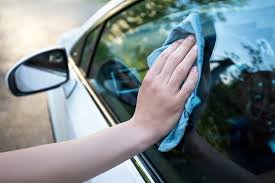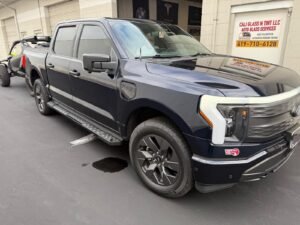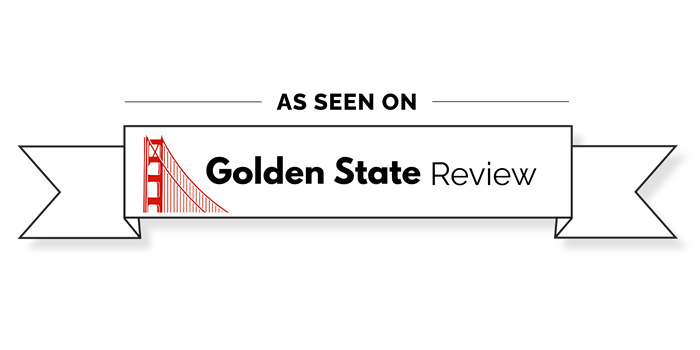Adding window tint to your vehicle is one of the most popular customizations, offering superior heat rejection, privacy, and style. However, the excitement of achieving that sleek, dark look often comes with a critical question: How dark can your window tint legally be?
The answer is rarely simple, as the regulations change dramatically depending on where you live and what window is being tinted. Choosing the wrong tint level can result in costly tickets, mandatory removal, and even traffic stops.
At Cali Auto Glass & Tint, we prioritize both performance and compliance. This guide provides a deep dive into the complex world of window tint laws to ensure your vehicle is safe, legal, and perfectly styled.
Understanding VLT: The Universal Measurement
To understand tint laws, you must first understand the primary metric used by law enforcement across the United States: Visible Light Transmission (VLT).
What is VLT?
VLT (Visible Light Transmission) is the percentage of visible light that passes through your window and tint film combined.
- 70% VLT: Means 70% of light passes through. The window is very light and minimally tinted.
- 5% VLT: Means only 5% of light passes through. This is commonly known as “limousine tint” and is extremely dark.
- The Key Rule: The lower the VLT percentage, the darker the window.
Factory Tint vs. Aftermarket Tint
Many SUVs, trucks, and minivans come with factory tint (often 15% to 20% VLT) on the rear windows. This tint is baked into the glass and is generally considered part of the vehicle’s manufacturing. However, factory glass still absorbs some light.
When you apply aftermarket tint (like 35% film) over glass that already has a slight factory tint (say, 85% VLT), the final measurement will be lower than the film’s rating. This is a common reason why drivers unknowingly exceed the legal limit—the final VLT measurement is what matters, not just the film box rating.
The Law Explained: Front, Back, and the AS-1 Line
Window tint regulations categorize vehicle glass into three critical zones, and each zone has a different legal VLT limit.
- The Windshield (The AS-1 Line)
The windshield is the most restricted piece of glass for obvious safety reasons.
- Rule: Most states, including California, prohibit any tinting on the main portion of the windshield below the AS-1 line.
- What is the AS-1 Line? This is a small marking or line usually found two to five inches down from the top edge of the windshield. It signifies the point to which tint or sun-screening material may be legally applied.
- The Limit: Tint is generally allowed above the AS-1 line, and it must usually be non-reflective and no darker than 25% to 35% VLT (this limit varies by state).
- Front Side Windows
These are the windows immediately to the left and right of the driver and front passenger. Because these windows are essential for clear vision, merging, and communication with law enforcement, they have the strictest VLT requirements.
The Common Range: Most states require the front side windows to allow 35% VLT or more (meaning they can’t be darker than 35%). Some states demand 50% or even 70% VLT.
California Law (The Strict Rule): In California, the VLT requirement is among the strictest: the front side windows must allow 70% VLT. This means the tint is barely noticeable.
- Rear Side Windows and Rear Window
These windows are typically more lenient, recognizing the need for passenger privacy and sun protection for those in the back.
- The Common Range: Most states allow these windows to be tinted to 15% to 35% VLT.
- The “Any” Rule: Many states, including California, follow the “Any Darkness” rule for the rear side windows and the rear window (behind the driver). This means you can tint these windows to 5% VLT (limo tint) or any other level, provided your vehicle has functional dual outside rearview mirrors.
State-by-State Differences: A Quick Comparison
While this article is not a substitute for checking your local DMV/Highway Patrol guidelines, understanding the variation highlights the necessity of professional compliance.
State Front Side VLT Limit (Driver/Passenger) Rear Side VLT Limit
California 70% VLT (Very Light) Any VLT (If dual mirrors are present)
New York 70% VLT (Very Light) 70% VLT (Only behind the driver’s seat)
Texas 25% VLT 25% VLT
Florida 28% VLT 15% VLT
Washington 24% VLT Any VLT
Penalties and Exemptions
Penalties for Non-Compliance
Driving with illegal tint is generally considered an equipment violation. Penalties typically include:
A “Fix-It” Ticket: You receive a citation but can have the ticket dismissed if you remove the illegal film within a set timeframe and provide proof of correction.
Fines: Fines vary widely but can range from $50 to over $250, especially if you have repeated violations.
Failed Inspection: Your vehicle will fail its annual safety inspection until the illegal film is removed.
Medical Exemptions
Some states grant medical exemptions that allow a driver or passenger to legally use darker tint (lower VLT) than otherwise permitted. This is typically for conditions like lupus, severe photosensitivity, or specific skin cancers. To qualify, you usually need a signed letter or affidavit from a licensed physician, which must be kept in the vehicle at all times.
Why Professional Compliance is Non-Negotiable
Attempting a window tint application yourself or trusting a non-certified installer is a gamble that often results in more than just bubbling film—it creates a significant legal liability. True adherence to window tint laws requires technical precision and film expertise.
The Technical Necessity of VLT Metering
Law enforcement relies on the VLT (Visible Light Transmission) Meter—a highly accurate handheld device that measures the precise amount of light passing through your glass and the applied film. There is no guessing. A professional window tint shop operates under the same technical constraints.
- Pre-Installation Measurement: We use the VLT meter to measure your factory glass before installation. This is critical because most factory windows already reduce VLT by 15-20%.
- Calculated Compliance: We then precisely calculate which film percentage (e.g., 35%, 50%, or 70%) will keep your final VLT reading above the legal threshold (e.g., the strict 70% VLT required on California front windows).
- Post-Installation Certification: Every job is finalized with a VLT meter test, ensuring your paperwork and installation guarantee that you are legally compliant when you drive away.
Compliance and Warranty: The Cali Auto Glass & Tint Guarantee
When searching for a local window tint shop, you need a partner who guarantees both aesthetics and legality. At Cali Auto Glass & Tint, our service is built on guaranteeing compliance with local window tint laws in the El Cajon region.
- Long-Term VLT Stability: Cheap, low-quality tint films can degrade rapidly over time due to sun exposure, causing color change (purple hues) and a gradual, unintended drop in VLT, eventually putting you outside the legal limit. We only use premium Ceramic and Carbon films engineered for superior color stability, ensuring your tint remains compliant for years to come.
- Certified Expertise for Every Window: From ensuring the precise placement above the AS-1 line on your windshield to confirming the VLT on your front side windows, our certified installers eliminate risk.
- The Lifetime Warranty: Our confidence in our compliance and quality allows us to back our service with a Lifetime Warranty. This warranty is your assurance that your tint will not only look great but will remain technically sound and legally compliant.
Don’t risk a “fix-it” ticket or compromise your visibility. Choose expertise that guarantees both a flawless look and legal peace of mind.
Conclusion
Navigating window tint laws doesn’t have to be complicated. By understanding the core concept of VLT and recognizing the crucial differences in state regulations, you can make an informed choice that enhances your vehicle legally. Whether you choose a subtle layer for UV protection or a darker film for maximum privacy, the final decision should always prioritize safety and compliance.
Ready to find the perfect, legal tint for your vehicle? Contact Cali Auto Glass & Tint today for a free quote on our guaranteed compliant window tinting services!
Tools

